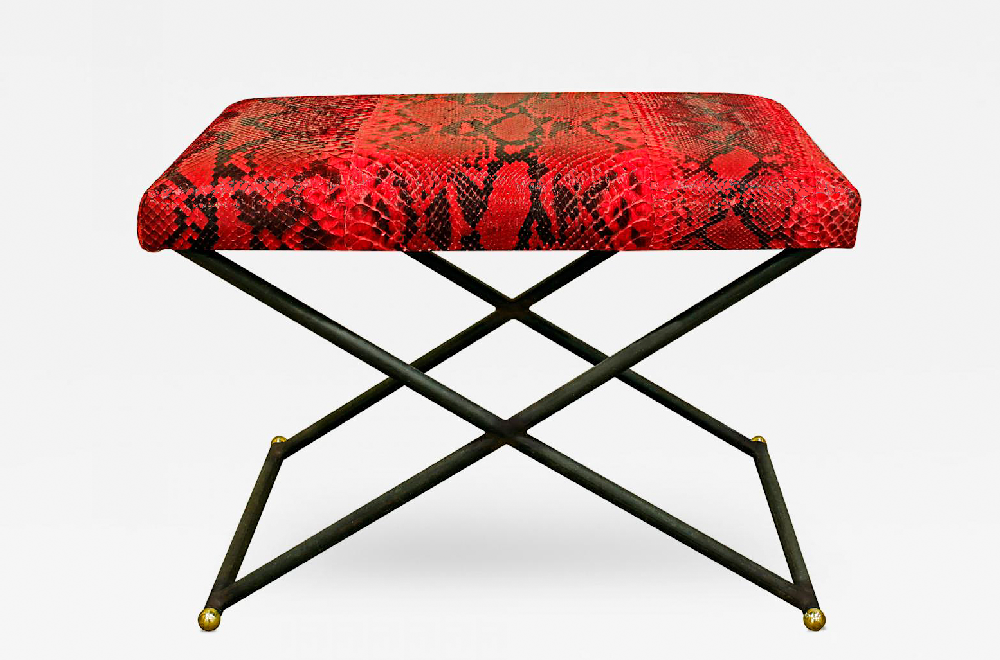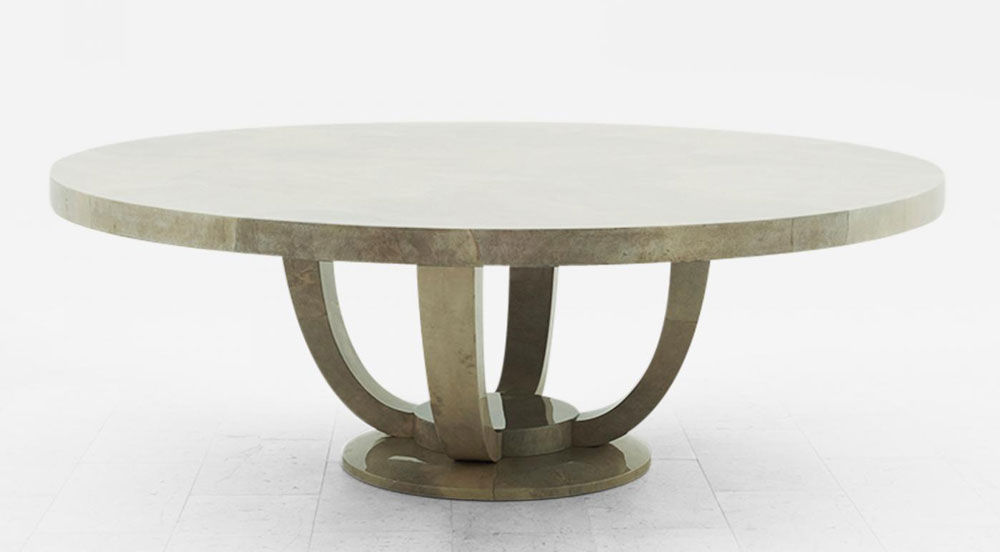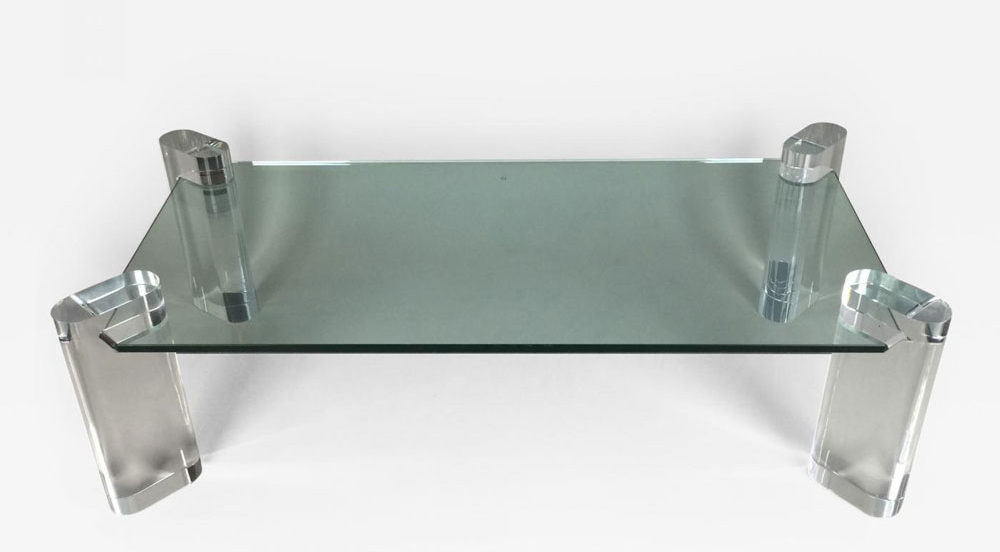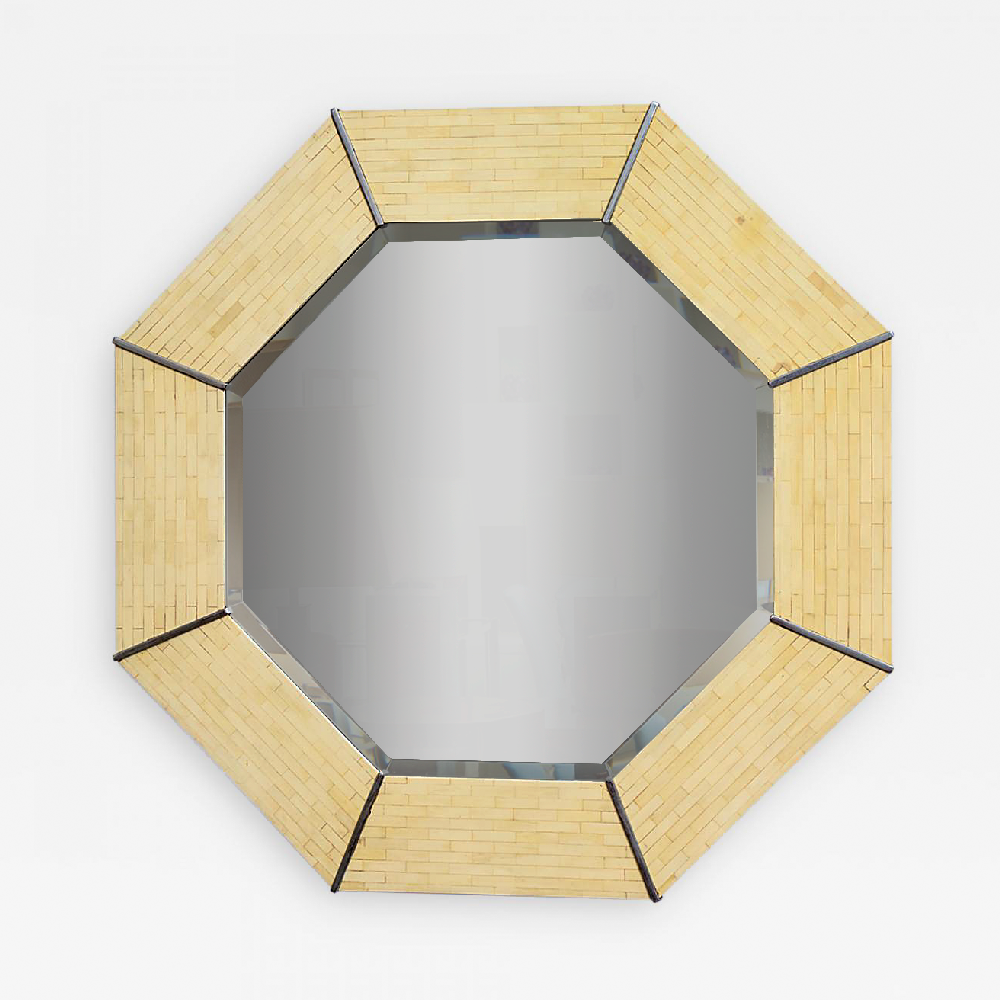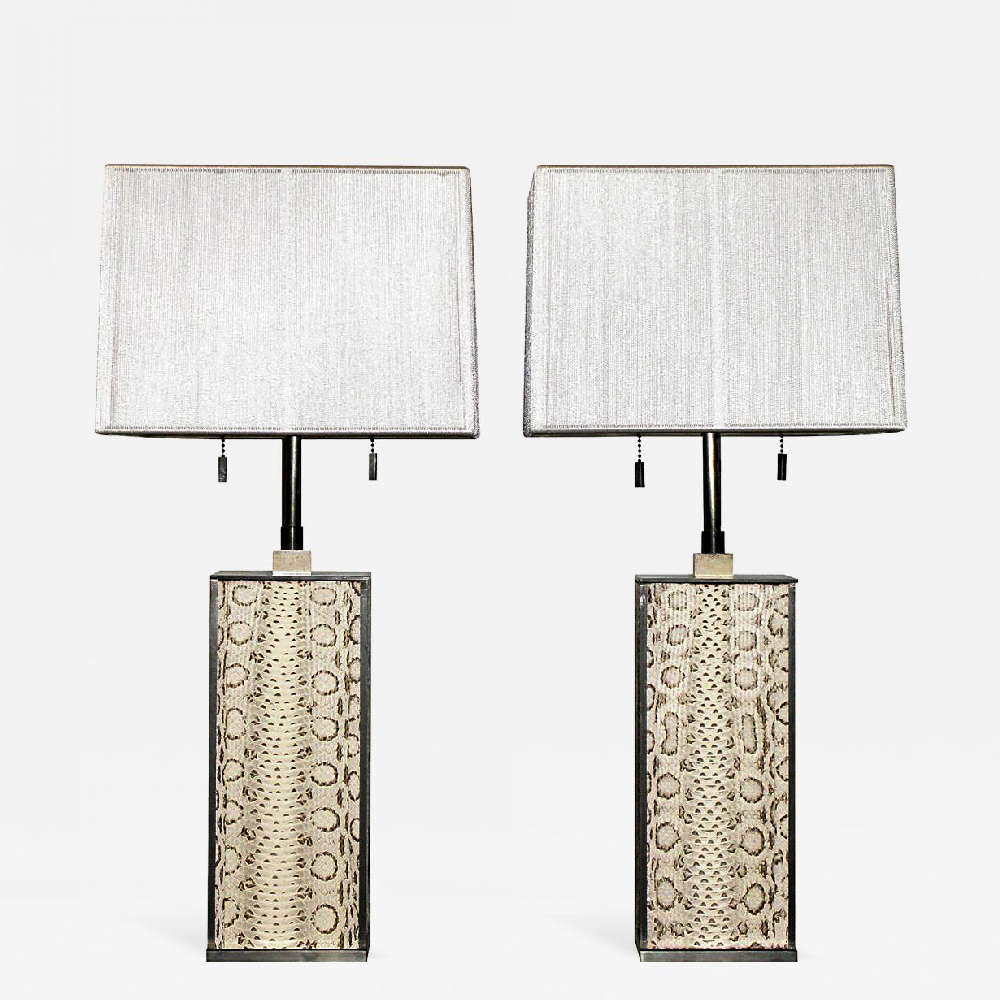Masters of Design Series: Karl Springer
In his seminal book, Modern Americana: Studio Furniture from High Craft to High Glam (Rizzoli), Todd Merrill, a New York-based dealer of mid-to-late 20th century design and studio furniture, describes Karl Springer as having a “flair for glamour without ostentation.” Using exotic materials, bold proportions, and striking colors, Springer took classic forms and made them his own. His aesthetic was a perfect match for the glittering Disco Decade, but after his death in 1991, the market for Karl Springer imploded.
In recent years, however, he is finally getting his due.
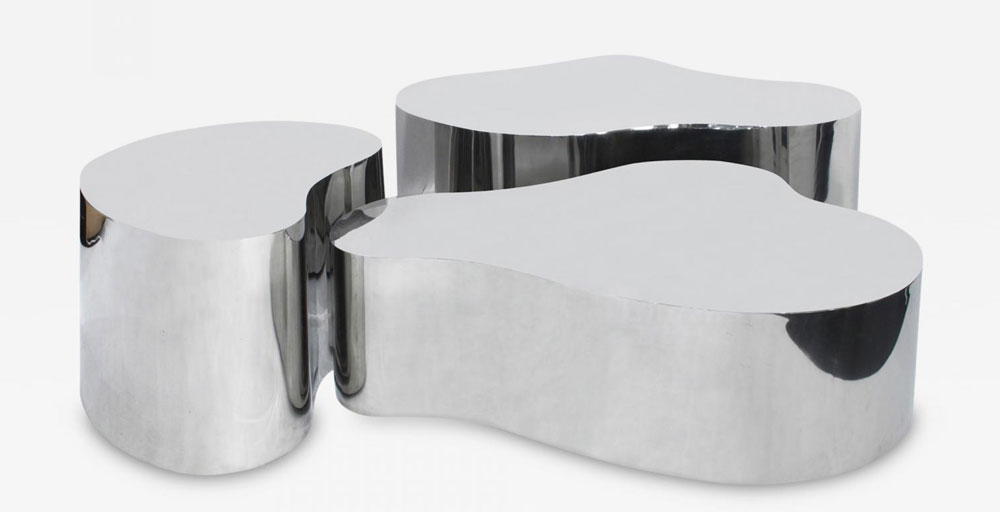
-
Original set of "Free Form Coffee Tables,” polished stainless steel, Karl Springer, ca. 1980s. From Lobel Modern NYC.
“It takes about twenty years for the market to have enough distance from the time of production to know which designers are great and timeless and memorable—and which designers are not,” said Evan Lobel, who has established himself as an authority on the furniture maker and assembled one of the largest Karl Springer collections in the world.
“There were plenty of other designers at the same time as Karl Springer, but his pieces are iconic, timeless. It’s that kind of perspective that drives the market.”
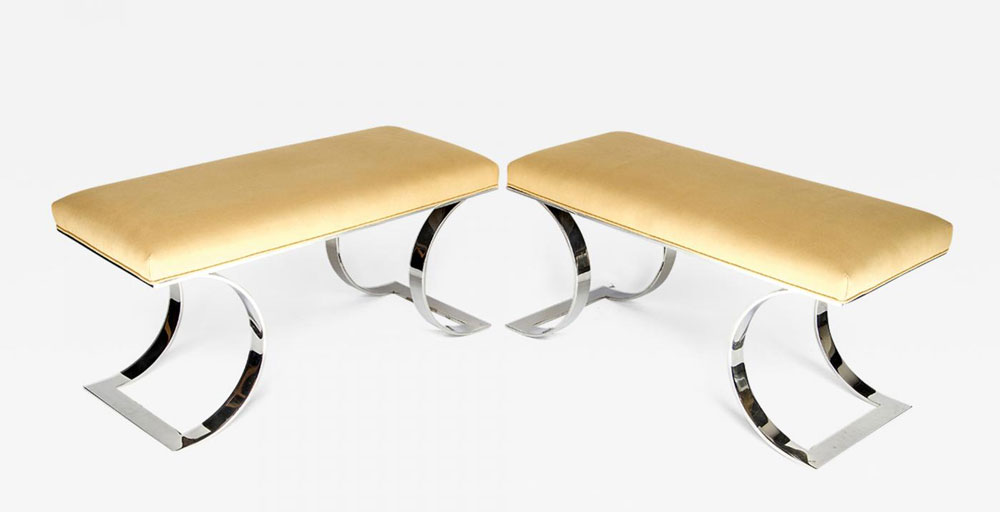
-
Jean-Michel Frank-inspired “C” benches, chromed steel, Karl Springer, ca. 1980s. From Todd Merrill Studio (New York).
|
|
Lobel has been instrumental in the Karl Springer revival, conducting research into his craftsmanship, meeting with former employees, collecting old photographs and otherwise trying to understand what distinguished Springer from his contemporaries. It all began fifteen years ago, when Lobel came across a telephone table (of the sort featured here) that was outfitted with cobra skin and moire silk. “It was like a small jewel of a piece of furniture,” Lobel said. “I remember thinking to myself, ‘This is one of the most beautifully crafted exotic tables I’ve ever seen.’”
Born in Berlin in 1931, Springer studied bookbinding and worked as a window dresser at a prominent clothier before leaving for New York in the late 1950s. At the age of twenty-six, Springer began styling windows at Lord & Taylor. In an effort to advance his career, he started applying his bookbinding skills to making jewel boxes, desk accessories, and telephone tables, which he expertly wrapped in animal skin. Soon, his work was garnering attention from the upper echelon, including a buyer for Bergdorf Goodman and the Duchess of Windsor, who introduced Springer to an array of high-end clients.
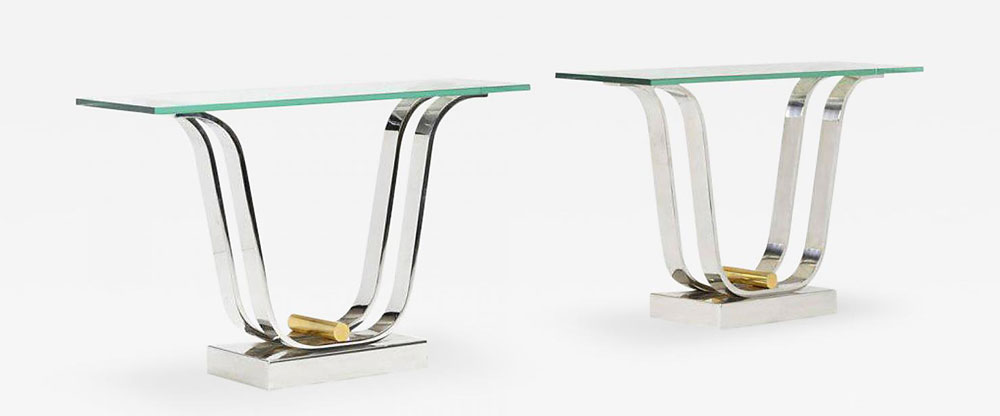
-
Tulip table bases, Karl Springer, ca. 1980s. Available at TISHU (Miami).
|
|
Springer established a shop on 1st Avenue and later, opened a small atelier on East 53rd Street, commonly referred to as Boutique Row, where demand for his work continued to grow. Inspired by everything from the French Art Deco masters of the 1920s to the Bauhaus, ancient Greek motifs, and Chinoiserie, Springer took simple, pared-down forms and elevated them to new heights. He used a swathe of exotic materials and finishes, including lacquered parchment, gunmetal, Lucite, inlaid-wood veneer, chrome, travertine, and granite, but it was his furniture wrapped in lacquered skins—goat, lizard, alligator, shagreen, python, and even frog—that were his most distinct.
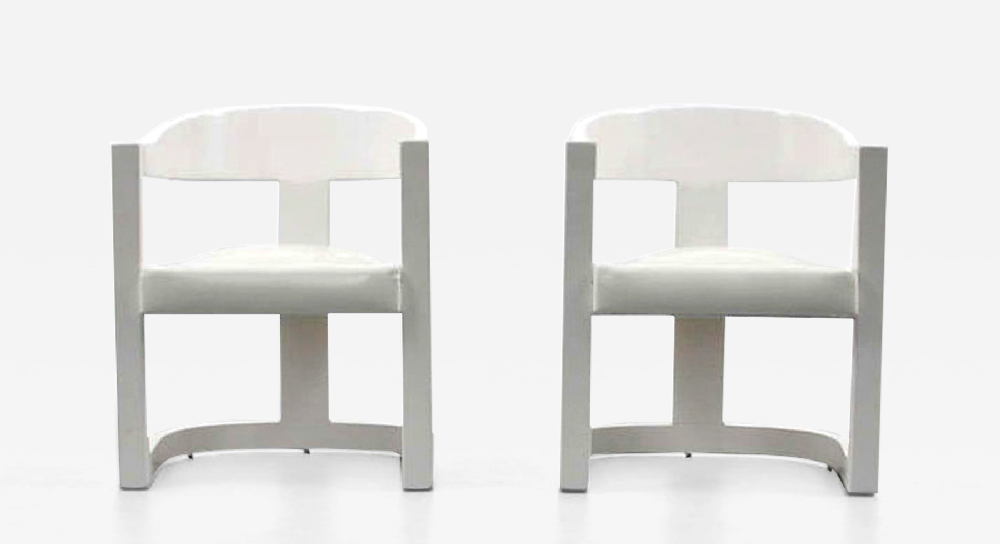
- "Onassis" Armchairs/Dining Chairs, two from a set of four, Karl Springer, ca. 1980. From objects20c (West Palm Beach, Fla.).
Springer opened his main showroom on East 61st Street in 1969 and operated several workshops throughout the city, and eventually around the world. In these specialized workshops, individual pieces were assembled in several stages by different craft specialists, many of whom hailed from Europe and Asia and were incredibly skilled in lacquering, batiking, leatherworking, and woodworking. According to Modern Americana, “Springer’s product depended on all of their varying degrees of expertise, casting the designer himself into the role of constant quality-control master. This sub-contracting allowed for a unique freedom of expression, styles liberated from traditional strictures, but also unforeseen dependencies as the most talented crafts people eventually wanted to spin off on their own, while the occasionally unscrupulous ones sold unauthorized copies or watered-down knockoffs on the side.” Ultimately, Springer moved as much production as possible abroad—lacquered goatskin pieces were made in Mexico; shagreen and coral in the Philippines and Indonesia; and glass lighting in Italy. By 1983, his furnishings were available in showrooms in Manhattan, Los Angeles, Munich, and Tokyo.
|
|
Merrill discovered Karl Springer's work when he opened his first shop in the Lower East Side in 2001. Along with a few other dealers, he began championing the designer's striking style. Today, demand for Springer’s work continues to grow and selling prices often far exceed the original costs. Merrill attributes this upswing to the classic nature of Springer’s designs as well as their unmatched quality. “A Karl Springer coffee table is engineered like a car,” says Merrill. “It’s heavy, the finish is perfect. He had unbelievable standards. He has been copied a bit, but the standards of production are so hard to replicate…nobody can make what he made.”
To view more of Karl Springer’s work click here















